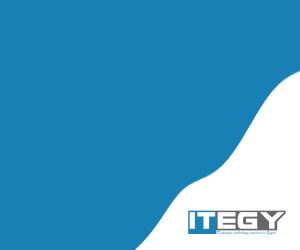Navigating WordPress
With WordPress®, you can manage anything from a simple personal site with just a few pages all the way up to a commercial site with hundreds of pages.
This article walks you through navigating WordPress' layout and administration panel. Let's get started. Go ahead and browse to your WordPress website. See Getting Started with WordPress for more information on installing WordPress.
WordPress Layout
You'll notice that your new blog looks pretty basic. Before you dive in and start to change the look of things, have a look around at the layout. This will help you later when you start to customize your site, as you'll know where everything is, and most important, what everything is called.
The layout you are looking at is called a theme. The default WordPress theme features a header at the top with the title placeholder of your site. Along the side are titles and links. This is your sidebar menu. The post is the primary, middle section. The footer is at the bottom of the page.
Let's look at the post for a moment. Below the post's title is some information, called the meta data, which contains information about the post such as the date and time the post was made, the author, and the categories the post is in.
Scroll down the page and notice the bar at the end of the page. This is the footer, and for now it says, "Your blog is proudly powered by WordPress."
Back to the sidebar, you can see different sections with information. Among these you might find a list including Pages, Categories, Archives, Calendar, and Dates. This is part of the menu or navigation panel that people can use to move around your site, visiting posts from different categories or time periods.
Viewing the Dashboard
On the right side of your blog, in the sidebar, is a section called Meta. In that section you'll see a link labeled Site Admin. Click that link and you'll be whisked away to your site's administration login page. Log in to your site using the user name and password established during the install process.
Note: You can also go straight to the login page by adding /wp-admin to the end of your site address. For example: http://coolexample.com/wp-admin.
Once you're logged in, the first thing that displays is the dashboard of the administration panel. The administration panel is the brain behind your website. This is where the organization of your site begins.
The administration panel provides access to the control features of your WordPress installation. The panel is presented in sections: the header, the main navigation, the work area, and the footer.
The large area in the middle of the screen is the work area. Specific information relating to a particular navigation choice, such as adding a new post, displays here.
You can customize the work area for each administrative function by clicking Screen Options, and then selecting what information you want to display.
Navigating the Menu
On the left side of the screen is the main navigation menu detailing each of the administrative functions you can perform.
The expand/collapse arrow just below the main navigation menu lets you collapse the menu to a set of icons, or expand (fly-out) to show an icon and description for each major administrative feature. Within each major feature, such as Posts, a submenu displays when you hover your mouse over the title area.
The default main navigation menu consists of:
- Dashboard — View recent activity both at your site and in the WordPress ecosystem at large.
- Posts — Create and edit published posts, categories, and tags. For more information, see Publish or Edit Posts in WordPress.
- Media — Manage your images, videos, and files.
- Links — Create and edit links to display on your site.
- Pages — Create and edit static pages for your site.
- Comments — Manage reader comments for your blog. Using the Comments panel you can edit and delete comments, and mark them as spam. For more information, see Managing Comments in WordPress.
- Appearance — Change the look of your site. Using the Appearance panel you can customize your site theme, manage widgets, create your site menu, and edit your PHP and CSS files.
- Plugins — Add and manage features to your WordPress blog that don't come standard with the default installation. For more information, see Activating and deactivating plugins in WordPress.
- Users — Manage user accounts for your site. For more information, see Managing users in WordPress.
- Tools — Speed up WordPress for your local machine, import content from other sources, export your content, or to upgrade your WordPress software to a new release.
- Settings — Customize how your site behaves, how you interact with your site, and how the rest of the world interacts with your site. For more information, see Customizing settings in WordPress.
